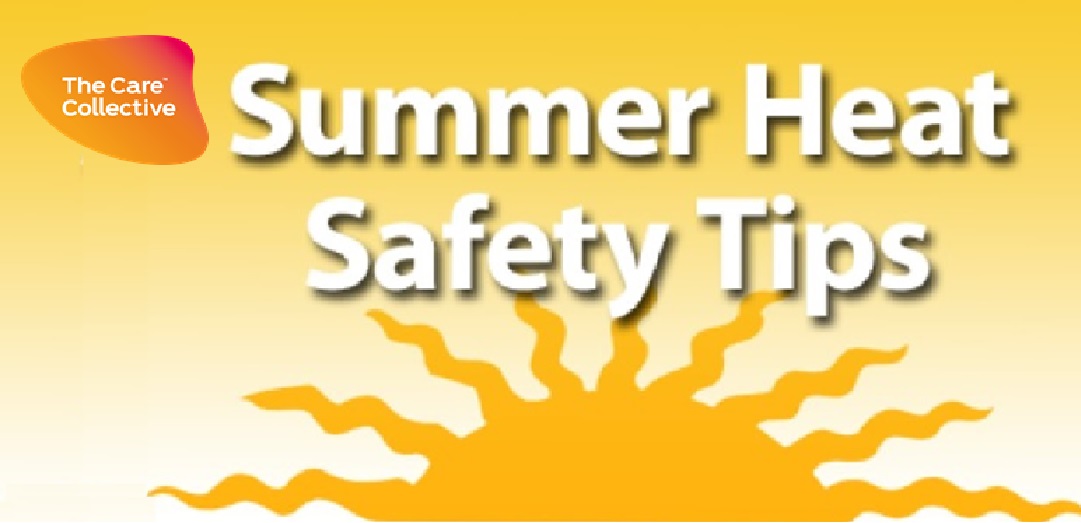Extreme Hot Weather: Advice for health and social care professionals
Keep the heat out
- Keep curtains on windows exposed to the sun closed while the temperature outside is higher than it is inside. Once the temperature outside has dropped lower than it is inside, open the windows. This may require late night visiting.
- Water external and internal plants, and spray the ground outside windows with water (avoid creating slip hazards) to help cool the air.
Keep body temperatures down
- Advise patients/clients to stay out of the sun, especially between 11am and 3pm.
- Advise patients/clients to stay in the shade, wear hats, sunscreen, thin scarves and light, loose-fitting, cotton clothing if going outside. Apply at least SPF 15 sunscreen generously and regularly. (Sunscreen can easily be washed, rubbed or sweated off – so reapply often throughout the day. Choose a “broad-spectrum” brand with four or five stars that protects against UVA and UVB rays). Choose a sunscreen that is specially formulated for babies and children’s skin as these products are less likely to contain alcohol or fragrances that might irritate the skin and cause allergic reactions · Ensure that patients/clients reduce their levels of physical exertion.
- Suggest patients/clients take regular cool showers or baths, or at least an overall body wash.
- Advise patients/clients to wear light, loose-fitting, cotton clothes to absorb sweat and prevent skin irritation.
- Suggest that patients/clients sprinkle their clothes with water regularly, and splash cool water on their face and the back of their neck. A damp cloth on the back of the neck helps temperature regulation.
- Advise patients/clients to drink regularly, preferably water or fruit juice, but avoid caffeine (tea, coffee, colas), very sweet drinks and alcohol.
- Advise patients/clients to eat more cold food, particularly salads and fruit which contain water.
- Move patients/clients so that each spends time in the cool room/area (below 26°C) – give priority and extra time to high risk patients/clients or any showing signs of distress.
Provide extra care
- Keep in regular contact with patients/clients throughout periods of extreme heat; try to arrange for someone to visit at least once a day.
- Keep giving consistent advice on what to do to help keep cool.
Monitor patients and building temperatures
- Check body temperature, heart and breathing rates, blood pressure and hydration levels.
- Watch for any changes in behaviour, especially drowsiness.
- Watch for signs of headache, unusual tiredness, weakness, giddiness, disorientation or sleeping problems.
- Monitor patients/clients daily fluid intake, particularly if they have several carers or are not always able to drink unaided.
- Monitor temperatures inside buildings regularly.
Be alert
As well as the specific symptoms of heat exhaustion and heatstroke, watch out for signs that could be attributed to other causes, such as:
- difficulty sleeping, drowsiness, faintness and changes in behaviour · increased body temperature.
- difficulty breathing and increased heart rate.
- dehydration, nausea or vomiting; or
- worsening health problems, especially of heart or respiratory system.
Emergency treatment:
If you suspect someone has heatstroke, call 999. While waiting for the ambulance:
- take the person’s temperature.
- if possible, move patients/clients somewhere cooler.
- cool patients/clients down as quickly as possible by giving them a cool shower, sprinkling them with water or wrapping them in a damp sheet, and using a fan to create an air current.
- encourage patients/clients to drink fluids, if they are conscious.
- give patients/clients a saline drip and oxygen if they are unwell; and
- do not give aspirin or paracetamol.


